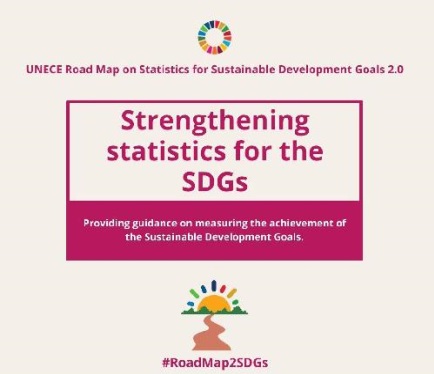
From its inception, the 2030 Agenda for Sustainable Development recognized the importance of strong national statistics. Building statistical capacity (especially in developing countries) and developing measurements of progress on sustainable development (targets 17.18 & 17.19) are included in the Agenda as means of implementation. Under the United Nations Statistical Commission, a global indicator set was developed for follow up and review. Furthermore, the Agenda calls for Member States to produce national statistics using the global indicator framework, and to complement these statistics with regional and national indicators.
Much has been achieved since the establishment of the global indicator set in 2016. At that time, internationally agreed methodologies existed for about 60 per cent of global indicators – a large challenge lay ahead for the international statistical community. Even more dire was the availability of data – only for about 35 per cent of indicators was data widely available (i.e., for most, but not all countries). For 25 per cent of indicators data was available in less than half of countries. No data was available for the remaining 40 per cent of indicators – they were new, without (agreed) methodologies to calculate them.
By the end of 2020, internationally agreed-on methodologies were developed for all indicators. By the end of 2023, data for two-thirds of SDG indicators are regularly produced by most countries.
Despite this progress, indicator availability remains a big challenge. As of 16 January 2024, for 42 indicators of the global set, data in the UN Global SDG Indicator Database is available for less than 25 per cent36 of countries.
36 UN Global SDG Indicator Database – Data Availability.
To understand how this lack of data impacts the implementation of the 2030 Agenda, we need to distinguish between two use cases for SDG data: 1) for international purposes, to calculate aggregates and track the SDGs on regional and national levels, and 2) for national purposes, to track the implementation of the SDGs nationally.
For international purposes, data availability is a critical concern. In the UNECE region, which includes many of the most statistically developed countries, only about two-thirds of all targets can be tracked on the regional level.
Arguably, the second use case is more important for the success of the SDGs, as the goals and targets are implemented nationally. An important question is therefore: Is the SDG data on the national level enabling policymakers to track national progress and are they enabled to make informed decisions about national SDG implementation?
Forty-nine UNECE countries (out of 56) have established a platform for national SDG data, which reveal considerable differences between national availability and the availability of SDG data in the global database. To ensure international comparability, the global database only includes indicators that were produced following the internationally agreed methodology. Many countries are, however, producing so-called proxies, that is, approximations of indicators in the global set. Forty-two UNECE countries have developed national indicators sets, designed to capture their respective targets in a way that is relevant for national implementation.
While proxy and national indicators are not useful for tracking the SDGs on a global or regional level due to issues of international comparability, they can provide critical information for the national implementation of the SDG targets. The availability of data on the national level is also important for a second international mechanism to track the implementation of the SDGs: the Voluntary National Reviews (VNRs). VNRs are becoming increasingly data-driven, and many countries consider relevant national indicators and proxies. In all, the evidence base for SDGs is therefore significantly stronger than can be deducted from the availability of internationally agreed indicators alone.
The UNECE Steering Group on Statistics for SDGs is currently working towards assessment of national indicator availability. The Steering Group is producing an addendum chapter on data availability to the 2nd edition of the UNECE Road Map on Statistics for SDGs and a tool for countries to self-assess their national availability of indicators and to organize their work as coordinators of the national statistical system for SDG statistics.
A challenge is that only a few national statistical offices have been given additional resources to work on SDG indicators. This work is often done as an additional task using existing resources. Often, there are more urgent priorities on which to provide data and progress in increasing data availability for SDGs remains slow. Midway through the SDG journey, there is still time to accelerate this pace of improvement.